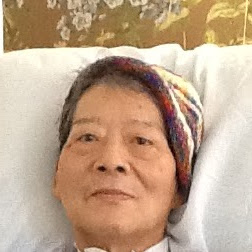Cheng N Lee
age ~50
from Scottsdale, AZ
- Also known as:
-
- Cheng Yu Lee
- Chengnan Lee
- Chang H Lee
- Chennan Lee
- Nan Lee Chengnan
- Cheng-Yu Lee
- Nan Lee Cheng
- Yu Lee Cheng
- Chang Hlee
Cheng Lee Phones & Addresses
- Scottsdale, AZ
- Potomac, MD
- Ann Arbor, MI
- Eugene, OR
- Montgomery Village, MD
- Laurel, MD
- College Park, MD
Work
-
Company:Aveda/masterson staffing solutions - Blaine, MN
Education
-
School / High School:Aberdeen Academy High School- Phoenix, AZApr 2013
-
Specialities:DIPLOMA
Ranks
-
Licence:New York - Currently registered
-
Date:2006
Resumes

Cheng Lee
view sourceLocation:
United States

Cheng Lee
view sourceLocation:
United States

Cheng Lee Saint Paul, MN
view sourceWork:
Aveda/Masterson Staffing Solutions
Blaine, MN
Jul 2013 to Sep 2013 Adecco
Woodbury, MN
May 2013 to Jun 2013
Medical Concepts Development WHCC/White House Custom Color
Eagan, MN
Feb 2012 to Feb 2012 Mister Hot Shine
Shoreview, MN
Jan 2009 to Sep 2011
Customer Service
Blaine, MN
Jul 2013 to Sep 2013 Adecco
Woodbury, MN
May 2013 to Jun 2013
Medical Concepts Development WHCC/White House Custom Color
Eagan, MN
Feb 2012 to Feb 2012 Mister Hot Shine
Shoreview, MN
Jan 2009 to Sep 2011
Customer Service
Education:
Aberdeen Academy High School
Phoenix, AZ
Apr 2013
DIPLOMA
Phoenix, AZ
Apr 2013
DIPLOMA
Lawyers & Attorneys

Cheng Ping Lee - Lawyer
view sourceAddress:
Simpson Thacher & Barlett
66406128xx (Office)
66406128xx (Office)
Licenses:
New York - Currently registered 2006
Education:
Columbia Law School
Medicine Doctors

Cheng V. Lee
view sourceSpecialties:
Family Medicine
Work:
Centerville ClinicsCenterville Clinic
86 Mcclellandtown Rd, Uniontown, PA 15401
7244307990 (phone), 7244307993 (fax)
86 Mcclellandtown Rd, Uniontown, PA 15401
7244307990 (phone), 7244307993 (fax)
Education:
Medical School
Ross Univ, Sch of Med, Roseau, Dominica
Graduated: 2000
Ross Univ, Sch of Med, Roseau, Dominica
Graduated: 2000
Procedures:
Electrocardiogram (EKG or ECG)
Hearing Evaluation
Pulmonary Function Tests
Vaccine Administration
Hearing Evaluation
Pulmonary Function Tests
Vaccine Administration
Conditions:
Abdominal Hernia
Abnormal Vaginal Bleeding
Acne
Acute Pharyngitis
Acute Sinusitis
Abnormal Vaginal Bleeding
Acne
Acute Pharyngitis
Acute Sinusitis
Languages:
Chinese
English
Spanish
English
Spanish
Description:
Dr. Lee graduated from the Ross Univ, Sch of Med, Roseau, Dominica in 2000. He works in Uniontown, PA and specializes in Family Medicine. Dr. Lee is affiliated with Uniontown Hospital.

Cheng L. Lee
view sourceSpecialties:
Family Medicine
Work:
Graybill Medical GroupGraybill Medical Group San Marcos Office
277 Rancheros Dr STE 100, San Marcos, CA 92069
8662282236 (phone), 7604710513 (fax)
277 Rancheros Dr STE 100, San Marcos, CA 92069
8662282236 (phone), 7604710513 (fax)
Education:
Medical School
Creighton University School of Medicine
Graduated: 2008
Creighton University School of Medicine
Graduated: 2008
Procedures:
Arthrocentesis
Destruction of Benign/Premalignant Skin Lesions
Electrocardiogram (EKG or ECG)
Hearing Evaluation
Pulmonary Function Tests
Skin Tags Removal
Vaccine Administration
Wound Care
Destruction of Benign/Premalignant Skin Lesions
Electrocardiogram (EKG or ECG)
Hearing Evaluation
Pulmonary Function Tests
Skin Tags Removal
Vaccine Administration
Wound Care
Conditions:
Abnormal Vaginal Bleeding
Acne
Acute Bronchitis
Acute Conjunctivitis
Acute Pharyngitis
Acne
Acute Bronchitis
Acute Conjunctivitis
Acute Pharyngitis
Languages:
English
Spanish
Spanish
Description:
Dr. Lee graduated from the Creighton University School of Medicine in 2008. He works in San Marcos, CA and specializes in Family Medicine. Dr. Lee is affiliated with Palomar Health Downtown Hospital Campus and Pomerado Hospital.
Isbn (Books And Publications)


Financial Analysis and Planning: Theory and Application
view sourceAuthor
Cheng F. Lee
ISBN #
0201044757

Financial Analysis and Planning: Theory and Application a Book of Readings
view sourceAuthor
Cheng F. Lee
ISBN #
0201044498


Advances in Financial Planning and Forecasting: A Research Annual, 1987
view sourceAuthor
Cheng F. Lee
ISBN #
0892326247

Metaficcion Y Mundos Posibles En La Narrativa De Jose Maria Merino
view sourceAuthor
Cheng Chan Lee
ISBN #
8484483304
Name / Title
Company / Classification
Phones & Addresses
MANSFIELD
Owner, Manager
Bagel Bin Inc
Ret Bakery & Eating Place
Ret Bakery & Eating Place
6030 Daybreak Cir, Clarksville, MD 21029
4105310335, 4105310336
4105310335, 4105310336
Chief Executive Officer, Principal
Calibrant Biosystems Inc
Noncommercial Research Organization
Noncommercial Research Organization
7507 Standish Pl, Rockville, MD 20855
Director
3 Mice, Inc
Us Patents
-
Two Dimensional Microfluidic Gene Scanner
view source -
US Patent:6929730, Aug 16, 2005
-
Filed:May 1, 2002
-
Appl. No.:10/135385
-
Inventors:Cheng Sheng Lee - Ellicott City MD, US
Donald Lad DeVoe - Bethesday MD, US -
International Classification:G01N027/447
G01N027/453 -
US Classification:204451, 204601
-
Abstract:One embodiment of the invention relates to a microfluidic apparatus for performing two dimensional biomolecular separations. According to one aspect of the invention, after a first dimension separation in a first microchannel, the sample material is electrokinetically and simultaneously transferred to an array of microchannels in the second dimension (e. g. , by changing the electric potentials at the reservoirs connected to the microchannels). Preferably any separation accomplished in the first dimension is completely retained upon transfer to the second dimension. According to another aspect of the invention, the separation in the second dimension is performed using a temperature gradient (e. g. , a spatial or temporal temperature gradient). According to one embodiment of the invention, the biomolecular material comprises DNA and the first dimension separation is a sized-based separation and the second dimension separation is a sequence-based separation.
-
Plastic Microfluidics Enabling Two-Dimensional Protein Separations In Proteome Analysis
view source -
US Patent:6974526, Dec 13, 2005
-
Filed:May 1, 2002
-
Appl. No.:10/135386
-
Inventors:Cheng Sheng Lee - Ellicott City MD, US
Don DeVoe - Bethesda MD, US -
Assignee:Calibrant Biosystems, Inc. - Rockville MD
The University of Maryland - Riverdale MD -
International Classification:G01N027/447
G01N027/453 -
US Classification:204451, 204601
-
Abstract:The invention provides a microfluidic apparatus for performing 2-D biomolecular separations. The microfluidic 2-D device may include first and second planar substrates which include at least a first dimension microchannel extending in a first direction and an array of second dimension microchannels extending in a second direction, preferably, orthogonal to the first dimension. The ends of at least some of the microchannels are in fluid communication with a plurality of reservoirs. The substrates may further include a number of microchannels and reservoirs. The reservoirs are in electrical communication with a plurality of electrodes and voltage power sources. The device enables two dimensional separations of proteins and other biomolecules. According to another aspect of the invention, an isoelectric point based separation is enabled in a first dimension, and a size based separation in a second dimension.
-
Microfluidic Apparatus For Performing Gel Protein Extractions And Methods For Using The Apparatus
view source -
US Patent:7070682, Jul 4, 2006
-
Filed:Jan 15, 2002
-
Appl. No.:10/047759
-
Inventors:Cheng Lee - Ellicott City MD, US
Don DeVoe - Bethesda MD, US -
International Classification:G01N 27/447
G01N 27/453 -
US Classification:204462, 204613
-
Abstract:The invention relates to an apparatus for performing gel protein extractions and methods of using the apparatus.
-
Two-Dimensional Microfluidics For Protein Separations And Gene Analysis
view source -
US Patent:7641780, Jan 5, 2010
-
Filed:Mar 23, 2005
-
Appl. No.:11/086400
-
Inventors:Cheng Sheng Lee - Ellicott City MD, US
Don DeVoe - Bethesda MD, US -
Assignee:Calibrant Biosystems, Inc. - Rockville MD
The University of Maryland - Riverdale MD -
International Classification:G01N 27/453
G01N 30/02
B01L 3/00 -
US Classification:204601, 422 70, 422 99
-
Abstract:The invention provides a microfluidic apparatus for performing 2-D biomolecular separations. The microfluidic 2-D device may include first and second planar substrates which include at least a first dimension microchannel extending in a first direction and an array of second dimension microchannels extending in a second direction, preferably, orthogonal to the first dimension. The ends of at least some of the microchannels are in fluid communication with a plurality of reservoirs. The substrates may further include a number of microchannels and reservoirs. The reservoirs are in electrical communication with a plurality of electrodes and voltage power sources. The device enables two dimensional separations of proteins, DNA and other biomolecules. According to another aspect of the invention, an array of tertiary microchannels extending in a third direction may be utilized.
-
Field Effect Flow Control Apparatus For Microfluidic Networks
view source -
US Patent:20030127329, Jul 10, 2003
-
Filed:Jun 1, 2002
-
Appl. No.:10/159914
-
Inventors:Donald DeVoe - Bethesda MD, US
Cheng Lee - Ellicott City MD, US -
International Classification:G01N027/26
G01N027/447 -
US Classification:204/454000, 204/451000, 204/601000
-
Abstract:One embodiment of the invention relates to a microfluidic apparatus for controlling fluid flow velocity during electroosmotic flow. According to one aspect of the invention, a voltage applied to a gate electrode modulates flow velocity within an associated microchannel, where the gate voltage is separate from any voltage used to induce electroosmotic flow. According to another aspect of the invention, the flow control apparatus combines multiple gate electrodes to control flow in a microfluidic network. According to one embodiment of the invention, the flow control apparatus is fabricated in a planar silicon substrate. According to another embodiment of the invention, the flow control apparatus is fabricated using polymer materials.
-
Devices And Methods For Correlated Analysis Of Multiple Protein Or Peptide Samples
view source -
US Patent:20060019399, Jan 26, 2006
-
Filed:Jul 1, 2005
-
Appl. No.:11/171427
-
Inventors:Brian Balgley - Annandale VA, US
Jonathan Cooper - Walkersville MD, US
Cheng Lee - Ellicott City MD, US
Donald DeVoe - Bethesda MD, US -
International Classification:G01N 33/00
-
US Classification:436086000
-
Abstract:Disclosed is a system for performing multiple analyses of protein and/or peptide samples and correlating the results of the analyses. The system comprises a sample inlet, a splitter means, at least two sample delivery capillaries, at least two sample deposition tools, and at least two sample collectors, wherein said splitter means is in fluid communication with the sample inlet and the sample delivery capillaries, and wherein liquid flow entering the splitter means is split into a number of sub-flows equal to the number of sample delivery capillaries. In one preferred embodiment, at least one microenzyme reactor is interfaced to a first sample delivery capillary in order to digest a protein sample within the capillary, while a second sample delivery capillary does not contain a microenzyme reactor, thereby enabling correlated analysis of the same protein sample in digested and undigested form. Methods for performing two or more analyses of protein and/or peptide samples and correlating the results of the analyses are also disclosed.
-
Methods And Apparatus For Porous Membrane Electrospray And Multiplexed Coupling Of Microfluidic Systems With Mass Spectrometry
view source -
US Patent:20060192107, Aug 31, 2006
-
Filed:Oct 5, 2005
-
Appl. No.:11/242842
-
Inventors:Donald DeVoe - Bethesda MD, US
Yingxin Wang - Columbia MD, US
Cheng Lee - Ellicott City MD, US
Yan Li - Bethesda MD, US -
International Classification:B01D 59/44
-
US Classification:250288000
-
Abstract:Disclosed are an apparatus, system, and method for performing electrospray of biomolecules, particularly peptides, polypeptides, and proteins. The apparatus comprises at least (1) a microfluidic substrate for containing an electrospray microchannel for delivering analyte molecules to a side edge of the substrate, and (2) a porous membrane attached to the side edge for performing electrospray from the exposed membrane surface. In one preferred embodiment, the exposed membrane surface is positioned above a target surface for depositing analyte molecules onto the target surface by electrospray. In another preferred embodiment, a proteolytic enzyme is bound to the porous membrane for performing protein digestion during electrospray.
-
Direct Immunoassay Using Ph-Sensitive Fluorochromes
view source -
US Patent:53345371, Aug 2, 1994
-
Filed:Nov 14, 1991
-
Appl. No.:7/791309
-
Inventors:Cheng S. Lee - Columbia MD
Ping Y. Huang - Baltimore MD -
Assignee:The University of Maryland - College Park MD
-
International Classification:G01N 33543
G01N 33536 -
US Classification:436518
-
Abstract:The complexing of an antibody-antigen binding pair is determined by observing the change in fluorescence of a pH-sensitive fluorochrome attached to one of the members of the binding pair. When the binding is conducted in a solution having a pH other than the isoelectric point of the antibody, there will be a change in the pH of the microenviromnent surrounding the fluorochrome. This change will correspond to a change in the observed fluorescent intensity. Either member of the binding pair can be labeled, and combined with that member whose presence is suspect, in an immunoassay.
Classmates

Cheng Lee
view sourceSchools:
Duncan Polytechnical High School Fresno CA 1988-1992
Community:
Monique Sims, Cynthia Frank

Cheng Lee
view sourceSchools:
Everest High School Schofield WI 2002-2006
Community:
Ann Bowen, Lori Scheel

Cheng Ning Lee
view sourceSchools:
Syracuse University Syracuse NY 1989-1993
Community:
Lawrence Friedman, Richard Steiner, Ruth Lundberg

Cheng Lee
view sourceSchools:
Fond Du Lac High School Fond Du Lac WI 1996-2000
Community:
Amy Puetz

Cheng Lee
view sourceSchools:
Patrick Henry High School Minneapolis MN 2000-2004
Community:
Brad Hempel, Daniel Amsden

Alberta College of Art &a...
view sourceGraduates:
Soo Cheng Soo Cheng Lee (1978-1982),
Laurieanne Gruber (1974-1975),
Armand Roy (1968-1972),
Jennifer Park (1990-1994)
Laurieanne Gruber (1974-1975),
Armand Roy (1968-1972),
Jennifer Park (1990-1994)

Central Kitsap High Schoo...
view sourceGraduates:
Cheng Lee (1988-1992),
Maria Racalto (1981-1981),
Jason Hurst (1992-1996),
Doris Sipe (1955-1959),
Shawn Nelson (1986-1990),
Jason McGovern (1994-1998)
Maria Racalto (1981-1981),
Jason Hurst (1992-1996),
Doris Sipe (1955-1959),
Shawn Nelson (1986-1990),
Jason McGovern (1994-1998)

Johnson & Wales Unive...
view sourceGraduates:
Chain Cheng Lee (1998-2000),
Suzanne Markham (1996-1998),
Mustafa Murat Balmumcu (1995-1995),
Krishna Pisipati (1991-1992),
Patricia Clift (1995-1997)
Suzanne Markham (1996-1998),
Mustafa Murat Balmumcu (1995-1995),
Krishna Pisipati (1991-1992),
Patricia Clift (1995-1997)
Youtube
Plaxo

mr. cheng dher lee
view sourcen.c.p.

Cheng Lee
view source
Cheng Lee
view sourcePast: Database Analyst at UT Southwestern Medical Center

Ms Lee Cheng
view sourceKuala Lumpur,Malaysia
Googleplus

Cheng Lee

Cheng Lee
Tagline:
Woot... night shift is the shift!

Cheng Lee

Cheng Lee

Cheng Lee

Cheng Lee

Cheng Lee

Cheng Lee

Cheng Tsung Lee
view source
Moh Cheng Lee
view source
Cheng Chenge Lee
view source
Kg Cheng Lee
view source
Cheng Hyang Lee
view source
Cheng Lee Ying
view source
Tan Cheng Lee
view source
Gavin Cheng Lee
view sourceFlickr
Get Report for Cheng N Lee from Scottsdale, AZ, age ~50





![MY CREATOR by Cheng Lee [Official Video] MY CREATOR by Cheng Lee [Official Video]](https://i.ytimg.com/vi/PM5fumIdIv0/hq720.jpg?sqp=-oaymwEcCNAFEJQDSFXyq4qpAw4IARUAAIhCGAFwAcABBg==&rs=AOn4CLB30IUMoBYWe2Uu5ItJhh1_TUdDHA)







